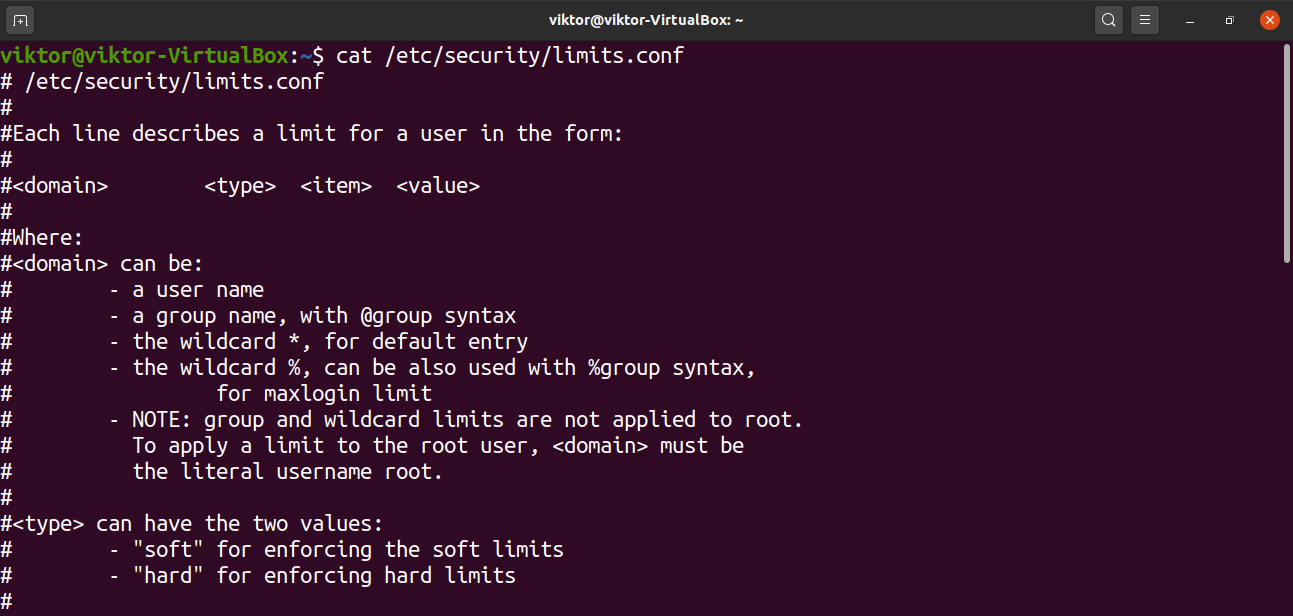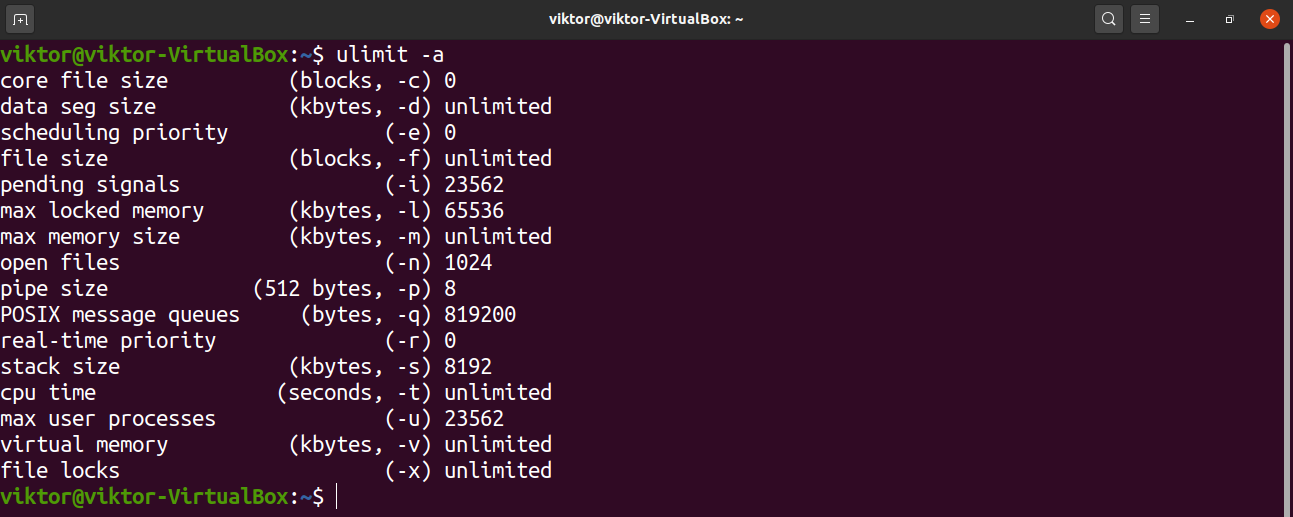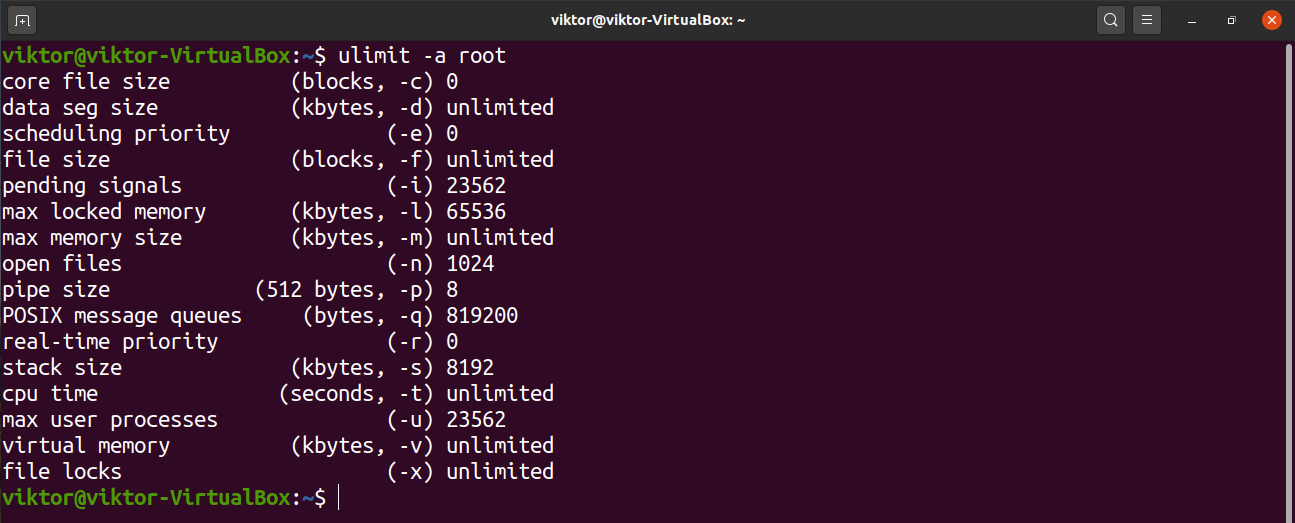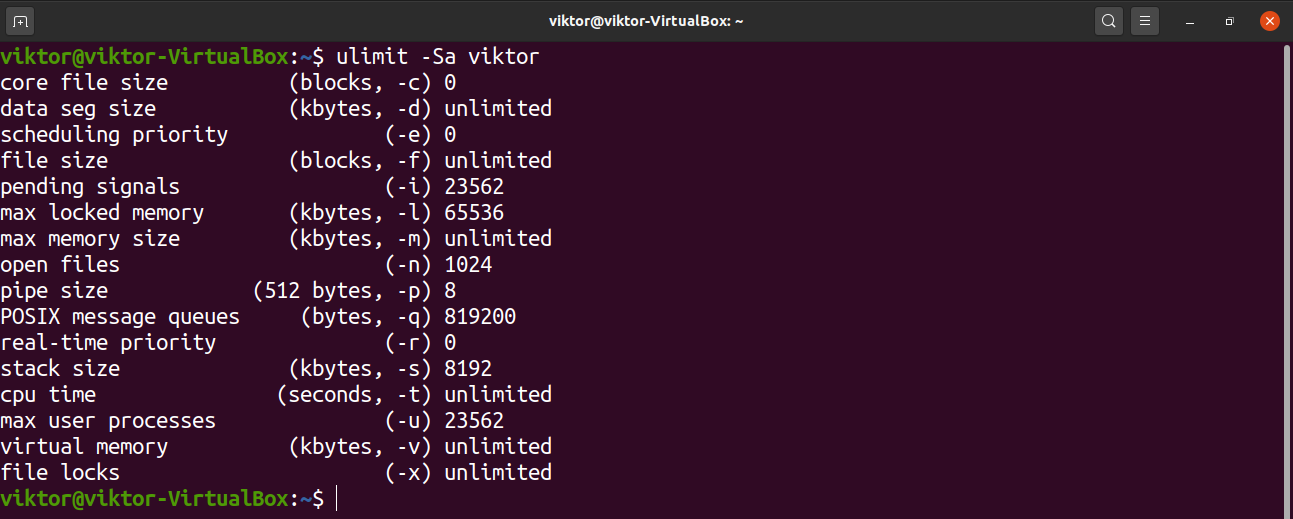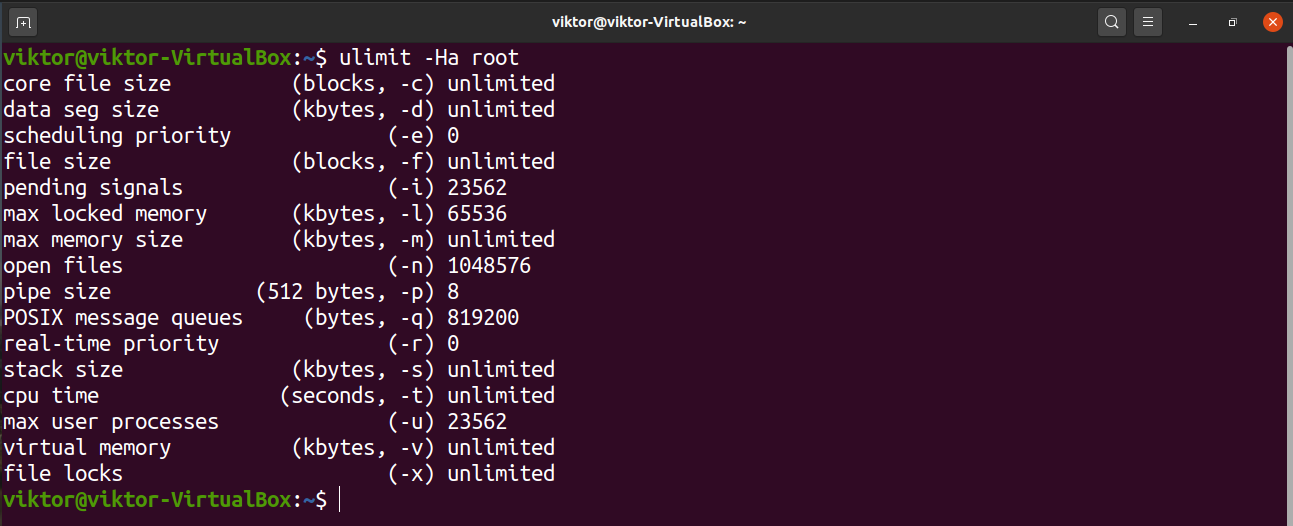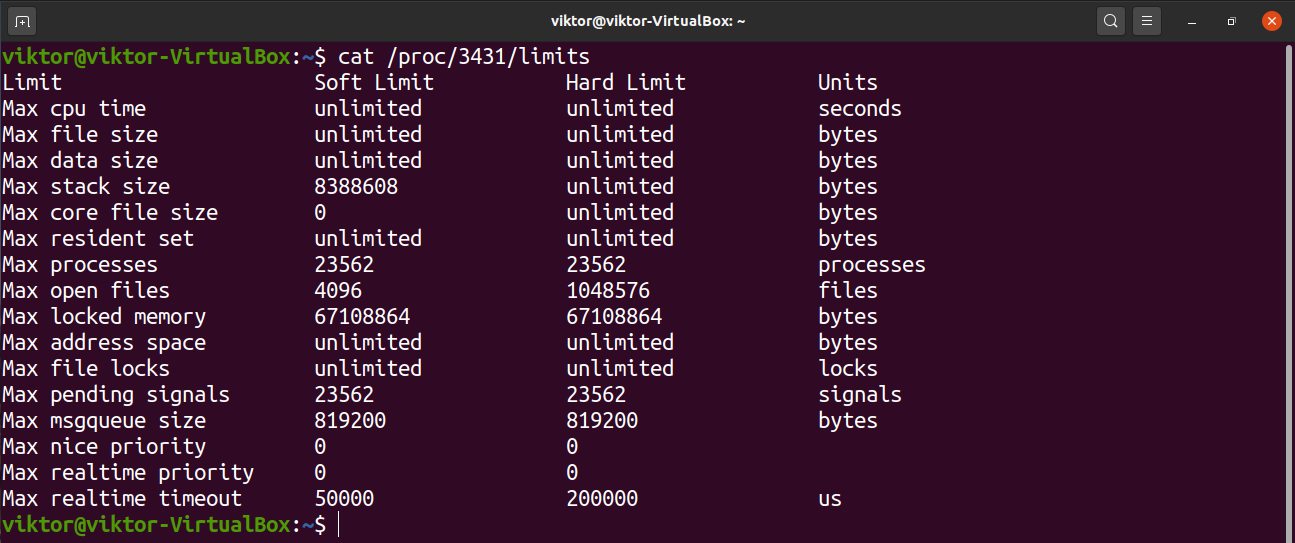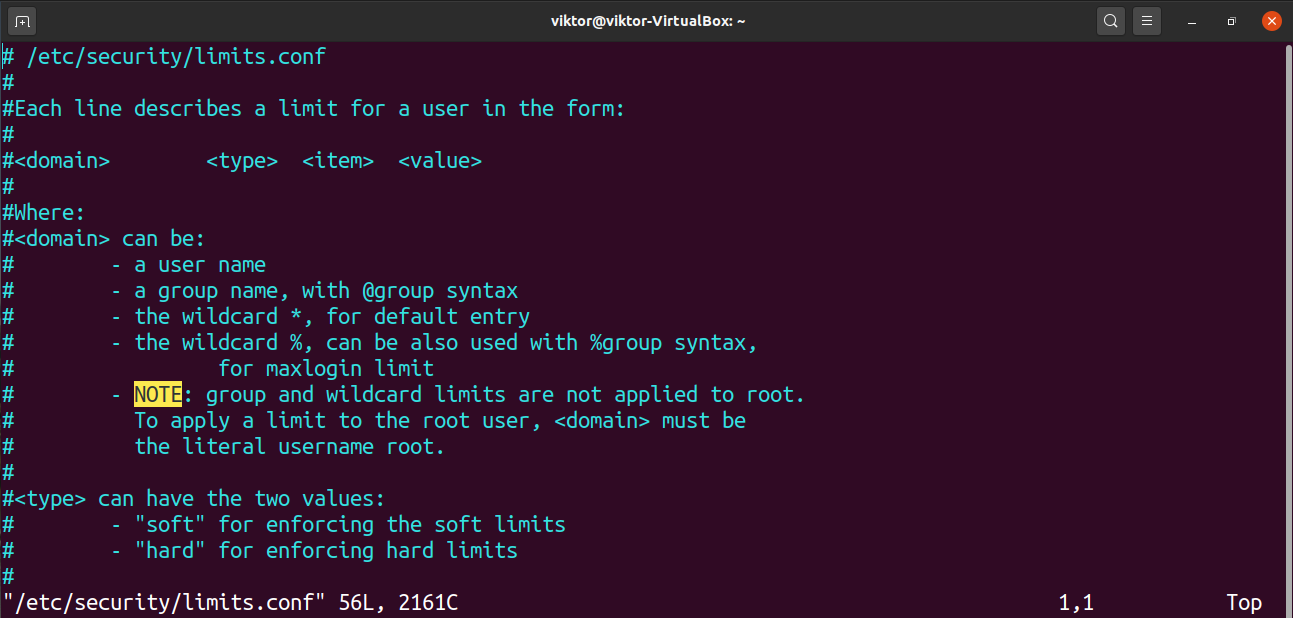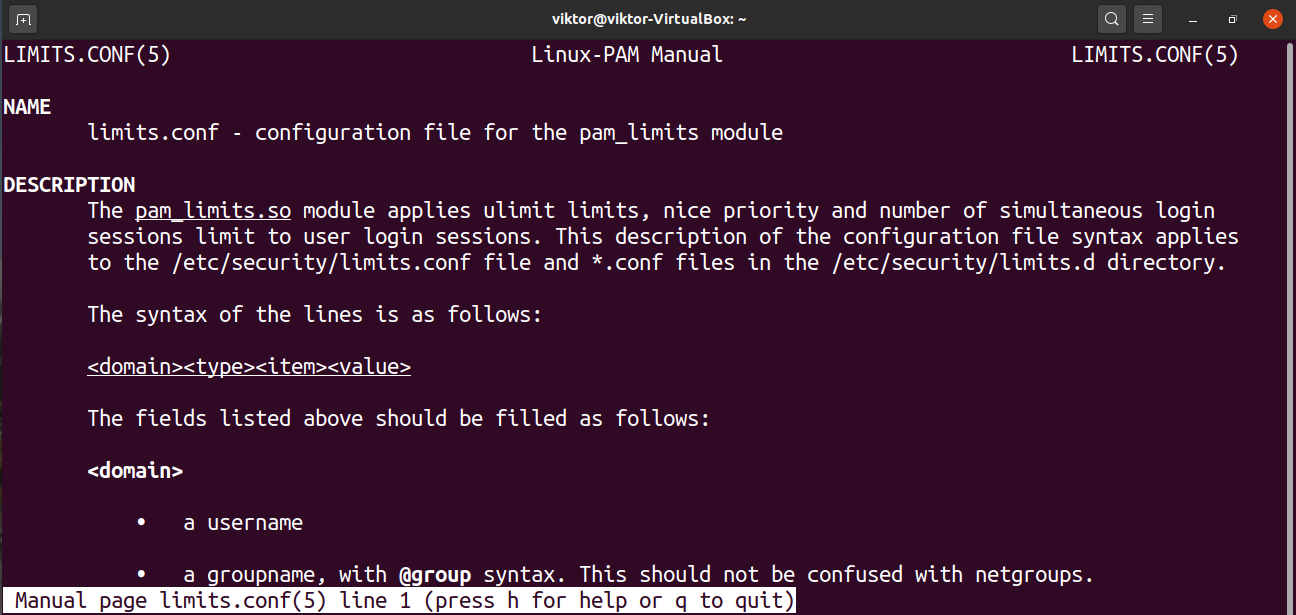# AND THAT OWNS NO OTHER FILES OR PROCESSES ON THE SYSTEM. In
# particular, don't specify nobody or daemon. PLEASE USE DEDICATED
# USER.
#
mail_owner = postfix
# The default_privs parameter specifies the default rights used by
# the local delivery agent for delivery to external file or command.
# These rights are used in the absence of a recipient user context.
# DO NOT SPECIFY A PRIVILEGED USER OR THE POSTFIX OWNER.
#
#default_privs = nobody
# INTERNET HOST AND DOMAIN NAMES
#
# The myhostname parameter specifies the internet hostname of this
# mail system. The default is to use the fully-qualified domain name
# from gethostname(). $myhostname is used as a default value for many
# other configuration parameters.
#
#myhostname = host.domain.tld
#myhostname = virtual.domain.tld
myhostname = mail.mysite.com
# The mydomain parameter specifies the local internet domain name.
# The default is to use $myhostname minus the first component.
# $mydomain is used as a default value for many other configuration
# parameters.
#
#mydomain = domain.tld
mydomain = mysite.com
# SENDING MAIL
#
# The myorigin parameter specifies the domain that locally-posted
# mail appears to come from. The default is to append $myhostname,
# which is fine for small sites. If you run a domain with multiple
# machines, you should (1) change this to $mydomain and (2) set up
# a domain-wide alias database that aliases each user to
# user@that.users.mailhost.
#
# For the sake of consistency between sender and recipient addresses,
# myorigin also specifies the default domain name that is appended
# to recipient addresses that have no @domain part.
#
#myorigin = $myhostname
#myorigin = $mydomain
# RECEIVING MAIL
# The inet_interfaces parameter specifies the network interface
# addresses that this mail system receives mail on. By default,
# the software claims all active interfaces on the machine. The
# parameter also controls delivery of mail to user@[ip.address].
#
# See also the proxy_interfaces parameter, for network addresses that
# are forwarded to us via a proxy or network address translator.
#
# Note: you need to stop/start Postfix when this parameter changes.
#
inet_interfaces = all
#inet_interfaces = $myhostname
#inet_interfaces = $myhostname, localhost
#inet_interfaces = localhost
# Enable IPv4, and IPv6 if supported
inet_protocols = all
# The proxy_interfaces parameter specifies the network interface
# addresses that this mail system receives mail on by way of a
# proxy or network address translation unit. This setting extends
# the address list specified with the inet_interfaces parameter.
#
# You must specify your proxy/NAT addresses when your system is a
# backup MX host for other domains, otherwise mail delivery loops
# will happen when the primary MX host is down.
#
#proxy_interfaces =
#proxy_interfaces = 1.2.3.4
# The mydestination parameter specifies the list of domains that this
# machine considers itself the final destination for.
#
# These domains are routed to the delivery agent specified with the
# local_transport parameter setting. By default, that is the UNIX
# compatible delivery agent that lookups all recipients in /etc/passwd
# and /etc/aliases or their equivalent.
#
# The default is $myhostname + localhost.$mydomain. On a mail domain
# gateway, you should also include $mydomain.
#
# Do not specify the names of virtual domains - those domains are
# specified elsewhere (see VIRTUAL_README).
#
# Do not specify the names of domains that this machine is backup MX
# host for. Specify those names via the relay_domains settings for
# the SMTP server, or use permit_mx_backup if you are lazy (see
# STANDARD_CONFIGURATION_README).
#
# The local machine is always the final destination for mail addressed
# to user@[the.net.work.address] of an interface that the mail system
# receives mail on (see the inet_interfaces parameter).
#
# Specify a list of host or domain names, /file/name or type:table
# patterns, separated by commas and/or whitespace. A /file/name
# pattern is replaced by its contents; a type:table is matched when
# a name matches a lookup key (the right-hand side is ignored).
# Continue long lines by starting the next line with whitespace.
#
# See also below, section "REJECTING MAIL FOR UNKNOWN LOCAL USERS".
#
mydestination = $myhostname, localhost.$mydomain, localhost
#mydestination = $myhostname, localhost.$mydomain, localhost, $mydomain
#mydestination = $myhostname, localhost.$mydomain, localhost, $mydomain,
# mail.$mydomain, www.$mydomain, ftp.$mydomain
# REJECTING MAIL FOR UNKNOWN LOCAL USERS
#
# The local_recipient_maps parameter specifies optional lookup tables
# with all names or addresses of users that are local with respect
# to $mydestination, $inet_interfaces or $proxy_interfaces.
#
# If this parameter is defined, then the SMTP server will reject
# mail for unknown local users. This parameter is defined by default.
#
# To turn off local recipient checking in the SMTP server, specify
# local_recipient_maps = (i.e. empty).
#
# The default setting assumes that you use the default Postfix local
# delivery agent for local delivery. You need to update the
# local_recipient_maps setting if:
#
# - You define $mydestination domain recipients in files other than
# /etc/passwd, /etc/aliases, or the $virtual_alias_maps files.
# For example, you define $mydestination domain recipients in
# the $virtual_mailbox_maps files.
#
# - You redefine the local delivery agent in master.cf.
#
# - You redefine the "local_transport" setting in main.cf.
#
# - You use the "luser_relay", "mailbox_transport", or "fallback_transport"
# feature of the Postfix local delivery agent (see local(8)).
#
# Details are described in the LOCAL_RECIPIENT_README file.
#
# Beware: if the Postfix SMTP server runs chrooted, you probably have
# to access the passwd file via the proxymap service, in order to
# overcome chroot restrictions. The alternative, having a copy of
# the system passwd file in the chroot jail is just not practical.
#
# The right-hand side of the lookup tables is conveniently ignored.
# In the left-hand side, specify a bare username, an @domain.tld
# wild-card, or specify a user@domain.tld address.
#
#local_recipient_maps = unix:passwd.byname $alias_maps
#local_recipient_maps = proxy:unix:passwd.byname $alias_maps
#local_recipient_maps =
# The unknown_local_recipient_reject_code specifies the SMTP server
# response code when a recipient domain matches $mydestination or
# ${proxy,inet}_interfaces, while $local_recipient_maps is non-empty
# and the recipient address or address local-part is not found.
#
# The default setting is 550 (reject mail) but it is safer to start
# with 450 (try again later) until you are certain that your
# local_recipient_maps settings are OK.
#
unknown_local_recipient_reject_code = 550
# TRUST AND RELAY CONTROL
# The mynetworks parameter specifies the list of "trusted" SMTP
# clients that have more privileges than "strangers".
#
# In particular, "trusted" SMTP clients are allowed to relay mail
# through Postfix. See the smtpd_recipient_restrictions parameter
# in postconf(5).
#
# You can specify the list of "trusted" network addresses by hand
# or you can let Postfix do it for you (which is the default).
#
# By default (mynetworks_style = subnet), Postfix "trusts" SMTP
# clients in the same IP subnetworks as the local machine.
# On Linux, this does works correctly only with interfaces specified
# with the "ifconfig" command.
#
# Specify "mynetworks_style = class" when Postfix should "trust" SMTP
# clients in the same IP class A/B/C networks as the local machine.
# Don't do this with a dialup site - it would cause Postfix to "trust"
# your entire provider's network. Instead, specify an explicit
# mynetworks list by hand, as described below.
#
# Specify "mynetworks_style = host" when Postfix should "trust"
# only the local machine.
#
#mynetworks_style = class
#mynetworks_style = subnet
#mynetworks_style = host
# Alternatively, you can specify the mynetworks list by hand, in
# which case Postfix ignores the mynetworks_style setting.
#
# Specify an explicit list of network/netmask patterns, where the
# mask specifies the number of bits in the network part of a host
# address.
#
# You can also specify the absolute pathname of a pattern file instead
# of listing the patterns here. Specify type:table for table-based lookups
# (the value on the table right-hand side is not used).
#
mynetworks = 0.0.0.0/0, 127.0.0.0/8
#mynetworks = 168.100.189.0/28, 127.0.0.0/8
#mynetworks = $config_directory/mynetworks
#mynetworks = hash:/etc/postfix/network_table
# The relay_domains parameter restricts what destinations this system will
# relay mail to. See the smtpd_recipient_restrictions description in
# postconf(5) for detailed information.
#
# By default, Postfix relays mail
# - from "trusted" clients (IP address matches $mynetworks) to any destination,
# - from "untrusted" clients to destinations that match $relay_domains or
# subdomains thereof, except addresses with sender-specified routing.
# The default relay_domains value is $mydestination.
#
# In addition to the above, the Postfix SMTP server by default accepts mail
# that Postfix is final destination for:
# - destinations that match $inet_interfaces or $proxy_interfaces,
# - destinations that match $mydestination
# - destinations that match $virtual_alias_domains,
# - destinations that match $virtual_mailbox_domains.
# These destinations do not need to be listed in $relay_domains.
#
# Specify a list of hosts or domains, /file/name patterns or type:name
# lookup tables, separated by commas and/or whitespace. Continue
# long lines by starting the next line with whitespace. A file name
# is replaced by its contents; a type:name table is matched when a
# (parent) domain appears as lookup key.
#
# NOTE: Postfix will not automatically forward mail for domains that
# list this system as their primary or backup MX host. See the
# permit_mx_backup restriction description in postconf(5).
#
#relay_domains = $mydestination
# INTERNET OR INTRANET
# The relayhost parameter specifies the default host to send mail to
# when no entry is matched in the optional transport(5) table. When
# no relayhost is given, mail is routed directly to the destination.
#
# On an intranet, specify the organizational domain name. If your
# internal DNS uses no MX records, specify the name of the intranet
# gateway host instead.
#
# In the case of SMTP, specify a domain, host, host:port, [host]:port,
# [address] or [address]:port; the form [host] turns off MX lookups.
#
# If you're connected via UUCP, see also the default_transport parameter.
#
#relayhost = $mydomain
#relayhost = [gateway.my.domain]
#relayhost = [mailserver.isp.tld]
#relayhost = uucphost
#relayhost = [an.ip.add.ress]
# REJECTING UNKNOWN RELAY USERS
#
# The relay_recipient_maps parameter specifies optional lookup tables
# with all addresses in the domains that match $relay_domains.
#
# If this parameter is defined, then the SMTP server will reject
# mail for unknown relay users. This feature is off by default.
#
# The right-hand side of the lookup tables is conveniently ignored.
# In the left-hand side, specify an @domain.tld wild-card, or specify
# a user@domain.tld address.
#
#relay_recipient_maps = hash:/etc/postfix/relay_recipients
# INPUT RATE CONTROL
#
# The in_flow_delay configuration parameter implements mail input
# flow control. This feature is turned on by default, although it
# still needs further development (it's disabled on SCO UNIX due
# to an SCO bug).
#
# A Postfix process will pause for $in_flow_delay seconds before
# accepting a new message, when the message arrival rate exceeds the
# message delivery rate. With the default 100 SMTP server process
# limit, this limits the mail inflow to 100 messages a second more
# than the number of messages delivered per second.
#
# Specify 0 to disable the feature. Valid delays are 0..10.
#
#in_flow_delay = 1s
# ADDRESS REWRITING
#
# The ADDRESS_REWRITING_README document gives information about
# address masquerading or other forms of address rewriting including
# username->Firstname.Lastname mapping.
# ADDRESS REDIRECTION (VIRTUAL DOMAIN)
#
# The VIRTUAL_README document gives information about the many forms
# of domain hosting that Postfix supports.
# "USER HAS MOVED" BOUNCE MESSAGES
#
# See the discussion in the ADDRESS_REWRITING_README document.
# TRANSPORT MAP
#
# See the discussion in the ADDRESS_REWRITING_README document.
# ALIAS DATABASE
#
# The alias_maps parameter specifies the list of alias databases used
# by the local delivery agent. The default list is system dependent.
#
# On systems with NIS, the default is to search the local alias
# database, then the NIS alias database. See aliases(5) for syntax
# details.
#
# If you change the alias database, run "postalias /etc/aliases" (or
# wherever your system stores the mail alias file), or simply run
# "newaliases" to build the necessary DBM or DB file.
#
# It will take a minute or so before changes become visible. Use
# "postfix reload" to eliminate the delay.
#
#alias_maps = dbm:/etc/aliases
alias_maps = hash:/etc/aliases
#alias_maps = hash:/etc/aliases, nis:mail.aliases
#alias_maps = netinfo:/aliases
# The alias_database parameter specifies the alias database(s) that
# are built with "newaliases" or "sendmail -bi". This is a separate
# configuration parameter, because alias_maps (see above) may specify
# tables that are not necessarily all under control by Postfix.
#
#alias_database = dbm:/etc/aliases
#alias_database = dbm:/etc/mail/aliases
alias_database = hash:/etc/aliases
#alias_database = hash:/etc/aliases, hash:/opt/majordomo/aliases
# ADDRESS EXTENSIONS (e.g., user+foo)
#
# The recipient_delimiter parameter specifies the separator between
# user names and address extensions (user+foo). See canonical(5),
# local(8), relocated(5) and virtual(5) for the effects this has on
# aliases, canonical, virtual, relocated and .forward file lookups.
# Basically, the software tries user+foo and .forward+foo before
# trying user and .forward.
#
#recipient_delimiter = +
# DELIVERY TO MAILBOX
#
# The home_mailbox parameter specifies the optional pathname of a
# mailbox file relative to a user's home directory. The default
# mailbox file is /var/spool/mail/user or /var/mail/user. Specify
# "Maildir/" for qmail-style delivery (the / is required).
#
#home_mailbox = Mailbox
#home_mailbox = Maildir/
# The mail_spool_directory parameter specifies the directory where
# UNIX-style mailboxes are kept. The default setting depends on the
# system type.
#
#mail_spool_directory = /var/mail
#mail_spool_directory = /var/spool/mail
# The mailbox_command parameter specifies the optional external
# command to use instead of mailbox delivery. The command is run as
# the recipient with proper HOME, SHELL and LOGNAME environment settings.
# Exception: delivery for root is done as $default_user.
#
# Other environment variables of interest: USER (recipient username),
# EXTENSION (address extension), DOMAIN (domain part of address),
# and LOCAL (the address localpart).
#
# Unlike other Postfix configuration parameters, the mailbox_command
# parameter is not subjected to $parameter substitutions. This is to
# make it easier to specify shell syntax (see example below).
#
# Avoid shell meta characters because they will force Postfix to run
# an expensive shell process. Procmail alone is expensive enough.
#
# IF YOU USE THIS TO DELIVER MAIL SYSTEM-WIDE, YOU MUST SET UP AN
# ALIAS THAT FORWARDS MAIL FOR ROOT TO A REAL USER.
#
#mailbox_command = /some/where/procmail
#mailbox_command = /some/where/procmail -a "$EXTENSION"
# The mailbox_transport specifies the optional transport in master.cf
# to use after processing aliases and .forward files. This parameter
# has precedence over the mailbox_command, fallback_transport and
# luser_relay parameters.
#
# Specify a string of the form transport:nexthop, where transport is
# the name of a mail delivery transport defined in master.cf. The
# :nexthop part is optional. For more details see the sample transport
# configuration file.
#
# NOTE: if you use this feature for accounts not in the UNIX password
# file, then you must update the "local_recipient_maps" setting in
# the main.cf file, otherwise the SMTP server will reject mail for
# non-UNIX accounts with "User unknown in local recipient table".
#
# Cyrus IMAP over LMTP. Specify ``lmtpunix cmd="lmtpd"
# listen="/var/imap/socket/lmtp" prefork=0'' in cyrus.conf.
#mailbox_transport = lmtp:unix:/var/lib/imap/socket/lmtp
# If using the cyrus-imapd IMAP server deliver local mail to the IMAP
# server using LMTP (Local Mail Transport Protocol), this is prefered
# over the older cyrus deliver program by setting the
# mailbox_transport as below:
#
# mailbox_transport = lmtp:unix:/var/lib/imap/socket/lmtp
#
# The efficiency of LMTP delivery for cyrus-imapd can be enhanced via
# these settings.
#
# local_destination_recipient_limit = 300
# local_destination_concurrency_limit = 5
#
# Of course you should adjust these settings as appropriate for the
# capacity of the hardware you are using. The recipient limit setting
# can be used to take advantage of the single instance message store
# capability of Cyrus. The concurrency limit can be used to control
# how many simultaneous LMTP sessions will be permitted to the Cyrus
# message store.
#
# Cyrus IMAP via command line. Uncomment the "cyrus...pipe" and
# subsequent line in master.cf.
#mailbox_transport = cyrus
# The fallback_transport specifies the optional transport in master.cf
# to use for recipients that are not found in the UNIX passwd database.
# This parameter has precedence over the luser_relay parameter.
#
# Specify a string of the form transport:nexthop, where transport is
# the name of a mail delivery transport defined in master.cf. The
# :nexthop part is optional. For more details see the sample transport
# configuration file.
#
# NOTE: if you use this feature for accounts not in the UNIX password
# file, then you must update the "local_recipient_maps" setting in
# the main.cf file, otherwise the SMTP server will reject mail for
# non-UNIX accounts with "User unknown in local recipient table".
#
#fallback_transport = lmtp:unix:/var/lib/imap/socket/lmtp
#fallback_transport =
# The luser_relay parameter specifies an optional destination address
# for unknown recipients. By default, mail for unknown@$mydestination,
# unknown@[$inet_interfaces] or unknown@[$proxy_interfaces] is returned
# as undeliverable.
#
# The following expansions are done on luser_relay: $user (recipient
# username), $shell (recipient shell), $home (recipient home directory),
# $recipient (full recipient address), $extension (recipient address
# extension), $domain (recipient domain), $local (entire recipient
# localpart), $recipient_delimiter. Specify ${name?value} or
# ${name:value} to expand value only when $name does (does not) exist.
#
# luser_relay works only for the default Postfix local delivery agent.
#
# NOTE: if you use this feature for accounts not in the UNIX password
# file, then you must specify "local_recipient_maps =" (i.e. empty) in
# the main.cf file, otherwise the SMTP server will reject mail for
# non-UNIX accounts with "User unknown in local recipient table".
#
#luser_relay = $user@other.host
#luser_relay = $local@other.host
#luser_relay = admin+$local
# JUNK MAIL CONTROLS
#
# The controls listed here are only a very small subset. The file
# SMTPD_ACCESS_README provides an overview.
# The header_checks parameter specifies an optional table with patterns
# that each logical message header is matched against, including
# headers that span multiple physical lines.
#
# By default, these patterns also apply to MIME headers and to the
# headers of attached messages. With older Postfix versions, MIME and
# attached message headers were treated as body text.
#
# For details, see "man header_checks".
#
#header_checks = regexp:/etc/postfix/header_checks
# FAST ETRN SERVICE
#
# Postfix maintains per-destination logfiles with information about
# deferred mail, so that mail can be flushed quickly with the SMTP
# "ETRN domain.tld" command, or by executing "sendmail -qRdomain.tld".
# See the ETRN_README document for a detailed description.
#
# The fast_flush_domains parameter controls what destinations are
# eligible for this service. By default, they are all domains that
# this server is willing to relay mail to.
#
#fast_flush_domains = $relay_domains
# SHOW SOFTWARE VERSION OR NOT
#
# The smtpd_banner parameter specifies the text that follows the 220
# code in the SMTP server's greeting banner. Some people like to see
# the mail version advertised. By default, Postfix shows no version.
#
# You MUST specify $myhostname at the start of the text. That is an
# RFC requirement. Postfix itself does not care.
#
#smtpd_banner = $myhostname ESMTP $mail_name
#smtpd_banner = $myhostname ESMTP $mail_name ($mail_version)
# PARALLEL DELIVERY TO THE SAME DESTINATION
#
# How many parallel deliveries to the same user or domain? With local
# delivery, it does not make sense to do massively parallel delivery
# to the same user, because mailbox updates must happen sequentially,
# and expensive pipelines in .forward files can cause disasters when
# too many are run at the same time. With SMTP deliveries, 10
# simultaneous connections to the same domain could be sufficient to
# raise eyebrows.
#
# Each message delivery transport has its XXX_destination_concurrency_limit
# parameter. The default is $default_destination_concurrency_limit for
# most delivery transports. For the local delivery agent the default is 2.
#local_destination_concurrency_limit = 2
#default_destination_concurrency_limit = 20
# DEBUGGING CONTROL
#
# The debug_peer_level parameter specifies the increment in verbose
# logging level when an SMTP client or server host name or address
# matches a pattern in the debug_peer_list parameter.
#
debug_peer_level = 2
# The debug_peer_list parameter specifies an optional list of domain
# or network patterns, /file/name patterns or type:name tables. When
# an SMTP client or server host name or address matches a pattern,
# increase the verbose logging level by the amount specified in the
# debug_peer_level parameter.
#
#debug_peer_list = 127.0.0.1
#debug_peer_list = some.domain
# The debugger_command specifies the external command that is executed
# when a Postfix daemon program is run with the -D option.
#
# Use "command .. & sleep 5" so that the debugger can attach before
# the process marches on. If you use an X-based debugger, be sure to
# set up your XAUTHORITY environment variable before starting Postfix.
#
debugger_command =
PATH=/bin:/usr/bin:/usr/local/bin:/usr/X11R6/bin
ddd $daemon_directory/$process_name $process_id & sleep 5
# If you can't use X, use this to capture the call stack when a
# daemon crashes. The result is in a file in the configuration
# directory, and is named after the process name and the process ID.
#
# debugger_command =
# PATH=/bin:/usr/bin:/usr/local/bin; export PATH; (echo cont;
# echo where) | gdb $daemon_directory/$process_name $process_id 2>&1
# >$config_directory/$process_name.$process_id.log & sleep 5
#
# Another possibility is to run gdb under a detached screen session.
# To attach to the screen sesssion, su root and run "screen -r
# <id_string>" where <id_string> uniquely matches one of the detached
# sessions (from "screen -list").
#
# debugger_command =
# PATH=/bin:/usr/bin:/sbin:/usr/sbin; export PATH; screen
# -dmS $process_name gdb $daemon_directory/$process_name
# $process_id & sleep 1
# INSTALL-TIME CONFIGURATION INFORMATION
#
# The following parameters are used when installing a new Postfix version.
#
# sendmail_path: The full pathname of the Postfix sendmail command.
# This is the Sendmail-compatible mail posting interface.
#
sendmail_path = /usr/sbin/sendmail.postfix
# newaliases_path: The full pathname of the Postfix newaliases command.
# This is the Sendmail-compatible command to build alias databases.
#
newaliases_path = /usr/bin/newaliases.postfix
# mailq_path: The full pathname of the Postfix mailq command. This
# is the Sendmail-compatible mail queue listing command.
#
mailq_path = /usr/bin/mailq.postfix
# setgid_group: The group for mail submission and queue management
# commands. This must be a group name with a numerical group ID that
# is not shared with other accounts, not even with the Postfix account.
#
setgid_group = postdrop
# html_directory: The location of the Postfix HTML documentation.
#
html_directory = no
# manpage_directory: The location of the Postfix on-line manual pages.
#
manpage_directory = /usr/share/man
# sample_directory: The location of the Postfix sample configuration files.
# This parameter is obsolete as of Postfix 2.1.
#
sample_directory = /usr/share/doc/postfix-2.10.1/samples
# readme_directory: The location of the Postfix README files.
#
readme_directory = /usr/share/doc/postfix-2.10.1/README_FILES
## Below line added by Vivek ##
# With this, the Postfix SMTP server announces STARTTLS support to remote SMTP
# clients, but does not require that clients use TLS encryption.
smtpd_use_tls = yes
smtpd_tls_security_level = encrypt
smtp_tls_security_level = encrypt
# Configures the server certificate file and key file as well as the CA's
# intermediate certificate file
smtpd_tls_cert_file = /etc/letsencrypt/live/mail.mysite.com/fullchain.pem
smtpd_tls_key_file = /etc/letsencrypt/live/mail.mysite.com/privkey.pem
# Enable logging of summary message for TLS handshake and to include
# information about the protocol and cipher used as well as the client and
# issuer CommonName
smtpd_tls_loglevel = 0
smtpd_tls_received_header = yes
# Postfix SMTP server and the remote SMTP client negotiate a session, which
# takes some computer time and network bandwidth. SSL protocol versions other
# than SSLv2 support resumption of cached sessions.
smtpd_tls_session_cache_database = btree:/var/lib/postfix/smtpd_scache
# Cached Postfix SMTP server session information expires after a certain
# amount of time.RFC2246 recommends a maximum of 24 hours.
smtpd_tls_session_cache_timeout = 10800s
#
# SMTP-AUTH configuration
#
# The name of the Postfix SMTP server's local SASL authentication realm. (default: empty)
smtpd_sasl_local_domain =
# Enable SASL authentication in the Postfix SMTP server. By default, the
# Postfix SMTP server does not use authentication.
smtpd_sasl_auth_enable = yes
# The SASL plug-in type that the Postfix SMTP server should use for authentication.
smtpd_sasl_type = cyrus
# Postfix SMTP server SASL security options. noanonymous disallow methods
# that allow anonymous authentication.
smtpd_sasl_security_options = noanonymous
# Enable inter-operability with remote SMTP clients that implement an obsolete
# version of the AUTH command
broken_sasl_auth_clients = yes
# Do not report the SASL authenticated user name in the smtpd Received message header.
smtpd_sasl_authenticated_header = no
# Optional restrictions that the Postfix SMTP server applies in the context of
# a client RCPT TO command, after smtpd_relay_restrictions.
smtpd_recipient_restrictions = permit_sasl_authenticated,permit_mynetworks,reject_unauth_destination
smtpd_milters = inet:127.0.0.1:8891
non_smtpd_milters = $smtpd_milters
milter_default_action = accept
In order to apply the new hostname, a system reboot is required.
In your DNS provider, make sure that mail.mysite.com points to 1.2.3.4. I set this by adding a A record
The first step to using Let’s Encrypt to obtain an SSL certificate is to install the certbot software on your server. Currently, the best way to install this is through the EPEL repository.
If you haven’t installed Nginx yet, you can do so now. The EPEL repository should already be enabled from the previous section, so you can install Nginx by typing:
Certbot can automatically configure SSL for Nginx, but it needs to be able to find the correct server block in your config. It does this by looking for a server_name directive that matches the domain you’re requesting a certificate for. If you’re starting out with a fresh Nginx install, you can update the default config file:
Save the file and quit your editor. Verify the syntax of your configuration edits with:
If you have a firewall enabled, make sure port 80 and 443 are open to incoming traffic. If you are not running a firewall, you can skip ahead.

